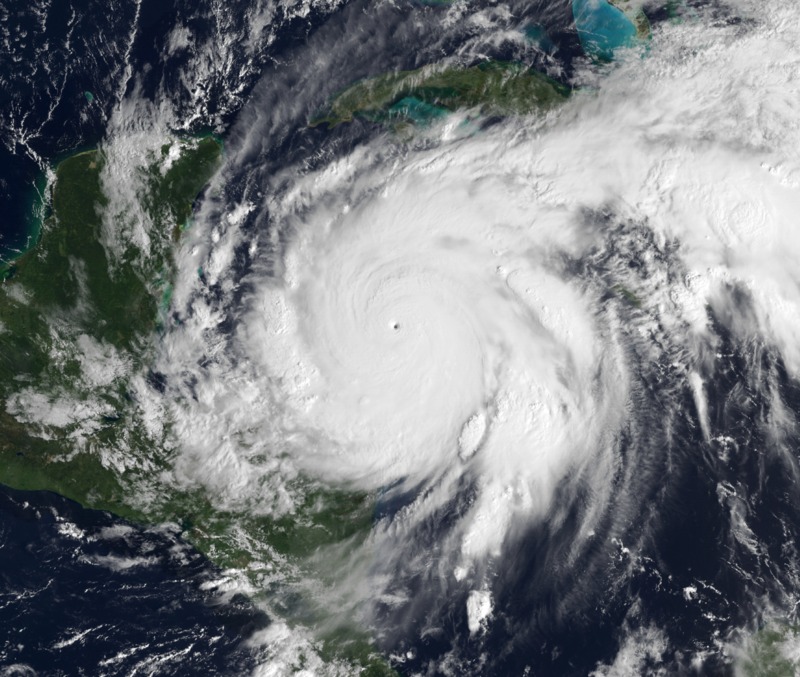This research article focuses on Hurricane Wilma, the most intense tropical cyclone ever recorded in the Atlantic basin and the second-most intense tropical cyclone in the Western Hemisphere. As part of the historically active 2005 Atlantic hurricane season, Wilma attained numerous records and left a trail of destruction in its wake. This article examines the formation, intensification, landfalls, and impacts of Hurricane Wilma, highlighting the affected areas, the extent of damage, loss of life, and economic costs. Furthermore, recommendations for preparedness and mitigation strategies are presented to protect against future hurricanes of similar magnitude.
Introduction: Hurricane Wilma originated from a tropical depression that developed in the Caribbean Sea near Jamaica on October 15, 2005. It quickly intensified into a tropical storm, named Wilma, and exhibited an unusual southward turn. Wilma continued to strengthen, reaching hurricane status on October 18. Over the next 24 hours, it underwent explosive intensification and became a Category 5 hurricane, boasting maximum sustained winds of 185 mph (298 km/h).
Intensity Fluctuations and Landfalls: After attaining Category 5 strength, Wilma’s intensity gradually diminished as it approached the Yucatán Peninsula, making landfall as a Category 4 hurricane. Subsequently, it entered the Gulf of Mexico as a Category 2 hurricane before undergoing re-intensification and reaching Category 3 status. On October 24, Wilma struck Cape Romano, Florida, as a Category 3 hurricane with winds of 120 mph (190 km/h). It then weakened to a Category 2 hurricane while crossing Florida but regained strength over the Atlantic Ocean before transitioning into an extratropical cyclone southeast of Nova Scotia on October 26.
Impacts and Damage: Hurricane Wilma caused significant damage and loss of life across various regions. The most destructive effects were observed in the Yucatán Peninsula of Mexico, Cuba, and the state of Florida in the United States. At least 52 fatalities were reported, with the majority occurring in Mexico and Cuba. The total damage reached an estimated $22.4 billion, predominantly in the United States. Infrastructure, housing, and agriculture suffered extensive destruction, necessitating widespread cleanup and rebuilding efforts.
Preparing for a Wilma-like Hurricane: To ensure preparedness for a hurricane resembling Wilma, it is crucial to implement effective protective measures. The following strategies are recommended:a. Stay informed: Monitor weather forecasts, updates, and evacuation orders issued by local authorities. b. Develop an emergency plan: Create a comprehensive plan for your household, including evacuation routes, emergency contacts, and essential supplies. c. Secure your property: Reinforce windows and doors, trim trees, and clear potential debris that may cause damage during high winds. d. Stock emergency supplies: Maintain a stockpile of food, water, medications, flashlights, batteries, and other essential items that can sustain your household during an emergency. e. Evacuation readiness: Familiarize yourself with evacuation routes and have a contingency plan in case evacuation is necessary.
Interesting Fact: A direct result of Hurricane Wilma was the prolonged period without a major hurricane making landfall in the contiguous United States. The record-breaking 11 years and 10 months of major hurricane absence was only broken when Hurricane Harvey struck southern Texas on August 26, 2017. Similarly, Florida experienced a nearly 12-year hiatus from major hurricanes until Hurricane Irma made landfall in September 2017.
Conclusion: Hurricane Wilma holds a prominent place in the annals of Atlantic hurricane history due to its unprecedented intensity and the devastation it caused. It serves as a reminder of the importance of preparedness, resilience, and prompt response to mitigate the impacts of future hurricanes. By adopting proactive measures, staying informed, and heeding official warnings, individuals and communities can enhance their ability to withstand and recover from powerful tropical cyclones such as Hurricane Wilma.




Leave a Reply